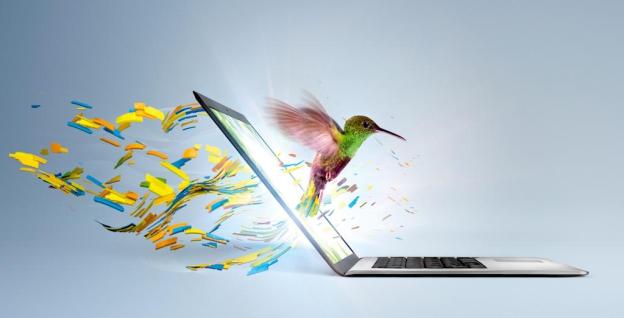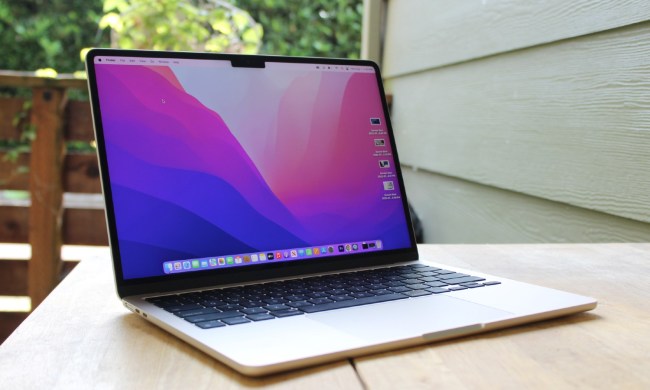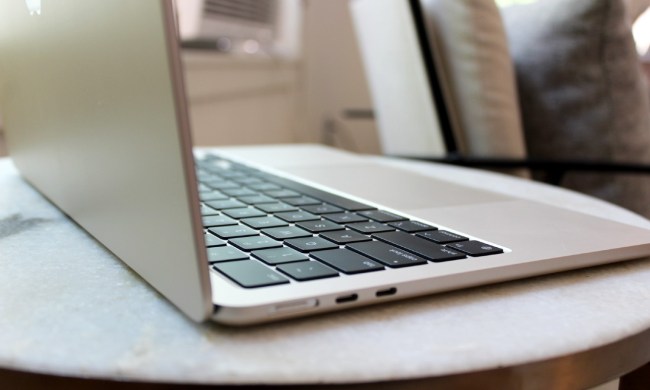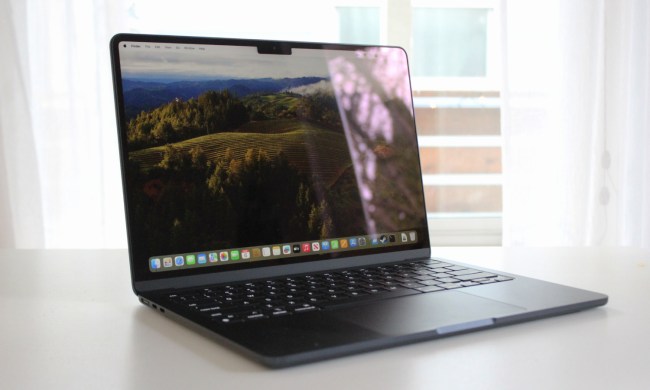
A year ago, chipmaking giant Intel was touting Ultrabooks as the next wave of the PC revolution, boldly trumpeting forecasts that a new slim, sleek class of notebook computers — of course, powered by Intel’s own Sandy Bridge and Ivy Bridge processors — would account for 40 percent of the notebook PC market by the end of 2012.
We’re now halfway through 2012, and guess what? Market analysis firms like IDC and Gartner find that the global PC market remained essentially flat for the second quarter of 2012 — and that’s the seventh straight quarter the PC market has experienced little to no growth. Gartner notes Ultrabook shipment volumes were “small” with little impact on the overall PC market, while IDC reached much the same conclusion. However, IDC analyst Jay Chou was willing to get a little more specific with Cnet: Chou indicated roughly half a million Ultrabook shipped during the first half of 2012, “nowhere near Intel’s initial hope.”
Why are Ultrabooks tanking? And is there any hope for them during the rest of 2012 and looking into 2013?
How bad are Ultrabook sales?
Computer manufacturers aren’t (yet) in the habit of breaking out their Ultrabook sales from the rest of their notebooks, or even their overall PC sales, including things like all-in-ones and traditional desktops. The same is true for market analysis firms: getting Ultrabook numbers separate from notebook numbers — or even separate from overall PC numbers — is a little tricky. So all analysis of the Ultrabook market to date comes with a few grains of salt.
Nonetheless, there are some signs. IDC’s Chou noted that about 500,000 Ultrabooks have been sold worldwide to date, and that number might hit a million by the end of 2012. Given that both IDC and Gartner expect to see about 220 to 230 million notebook computers shipped during 2012, that would mean Ultrabooks would account for less than one half of one percent of worldwide notebook PC shipments in 2012. Intel’s persistent claims that Ultrabooks would account for 40 percent of notebook PC sales by the end of the year would therefore be wildly off; using the same math, Intel was thinking Ultrabooks would account for about 90 million unit sales in 2012.
Market analysis firm NPD remains more bullish on Ultrabooks, claiming they have helped “establish a market for more premium-priced Windows notebooks at retail.” Although NPD doesn’t offer overall sales figures, it recently claimed Ultrabooks accounted for 11 percent of sale of Windows notebooks priced at $700 or more in the U.S. market from January to May 2012. That’s rather a lot of qualifiers, but NPD’s point is that, at least in the United States, Ultrabooks are seeing their strongest adoption in the higher end of the notebook PC market.

Of course, put another way, that means 89 percent of high-end Windows notebook sales in the U.S. during the first five months of the year were not Ultrabooks — and basically no Ultrabooks were sold below the $700 price point.
NPD’s findings also presaged NPD’s and Gartner’s latest figures: NPD found that overall market for Windows notebook computers in the United States shrank by 17 percent during the first five months of 2012.
So how could the computing industry have made such a giant miscalculation on Ultrabooks? There seem to be several factors — and which is most important depends on who you ask.
It’s the economy!
It’s no secret that the U.S. economy is still struggling to recover from recession, which means many consumers have little disposable income and put off major purchases — and that includes things like flashy new computers. Similarly, economic troubles in Europe — where Ireland may be emerging from an austerity program but Greece, Portugal, and Spain are all just getting started — puts a damper on consumer spending. Japan’s economy has been struggling for years, and IDC found the broader Asia Pacific PC market (excluding Japan) was flat during the second quarter — the worst its done in years. In other words, many of the major markets for new computers around the world are facing economic pressures that dampen consumers’ appetite for new computers.
Initial Ultrabook models likely failed chin-first into economic hard times simply by being expensive. In the United States, NPD’s figures highlight the price discrepancy between a traditional Windows notebook and Ultrabooks: NPD found the average market price for a Windows notebook was $510, where the average selling price for Ultrabooks for the first five months of the year was $927. Although Ultrabook prices have dropped during 2012 — dipping to $885 in May — they still remain substantially higher priced than traditional notebook PCs. Someone with $900 to spend on a new computer might consider a new Ultrabook — or consider that they can get a new traditional notebook and an iPad 2 for the same money.
As Intel kicks up production on its latest Ivy Bridge processors, Ultrabook prices should being to fall, with market watchers expecting Ultrabooks to start dipping below the $700 threshold in time for the back-to-school buying season. However, that still represents a roughly 40 percent premium over the cost of a traditional Windows notebook — which might offer a larger, higher-resolution display, more storage, and niceties like an optical drive.
It’s Apple!

Another obstacle Ultrabooks are likely facing: Apple. NPD highlighted the problem with its analysis of the average selling price of Ultrabooks landing around $900 — and several high profile models have had price tags well in excess of $1,400. The problem, of course, is that the market for super-slim, ultraportable notebooks was essentially invented by Apple way back at the beginning of 2008, and Apple dominates sales of all computers priced at $1,000 or higher — and perhaps coincidentally has done so since about the time the first MacBook Airs shipped.
With Ultrabooks, Intel and its partners are not only going up against a company that has been in the slim-light-notebook business years longer — and had time to evolve their product—but they aren’t even competing with Apple on price: the MacBook Air starts at $1,000.
Again, the answer here would seem to be cheaper Ultrabooks: if Intel and its manufacturing partners can argue that not only are their Ultrabooks slim and sleek like a MacBook Air but also cheaper, they may win sales from folks who would otherwise consider Macs.
It’s smartphones and tablets!

Of course, a primary argument for lackluster Ultrabook sales is that PC sales in general are being eroded by smartphones and tablets. “Consumers are less interested in spending on PCs as there are other technology product and services, such as the latest smartphones and media tablets,” wrote Gartner analyst Mikako Kitagawa. The basic idea is that inexpensive portable devices aimed at providing Internet access and media consumption are eroding growth in the PC market. After all, if all you do with a PC is keep up with email and social networking, visit a few Web sites, play a few games, and stream video, you don’t really need a full-fledged PC. A smartphone or tablet and maybe a streaming media service will pretty much fit the bill.
It’s Windows 8!

When Intel launched its Ultrabook initiative — and started subsidizing partner’s efforts to build them — we were told that Intel’s then-leading Sandy Bridge processors were just the first stage. Ultrabooks would really come into their own with the next-generation Ivy Bridge processors. That may be true: Ivy Bridge systems have only been in the market for a few months, and it may be too soon to say whether consumers were just holding off for Intel’s latest and greatest chips before jumping on the Ultrabook bandwagon. But it seems unlikely: historically, consumers haven’t cared much one way or another about what generation of processor is in a computer, so long as it does what they want. Although Ivy Bridge graphics are a solid step up from those in Sandy Bridge, neither chip struggles in the slightest with everyday tasks on a typical 11- to 13-inch 1,366 by 768-pixel display.
Instead, industry-watchers are pointing to Windows 8 as a reason consumers have so far declined to embrace Ultrabooks. With Microsoft now set to launch Windows 8 in October, the argument goes that consumers are delaying the purchase of a new computer until they can get a new machine that’s both designed for Windows 8 and comes with the new operating system pre-installed. There’s some logic to this: after all, few things feel quite like the burn of buying an expensive new computer only to have it made obsolete a few months later by new technology or a new operating system.
At a technical level, that doesn’t really hold water: most notebooks and Ultrabooks available now will run Windows 8 just fine. But anyone who has installed (or re-installed) Windows can understand the appeal of a system that’s ready to go right out of the box. And once Windows 8 hits the street, PC makers are planning to focus on Ultrabook designs that offer touchscreen displays and convertible tablet designs: Acer’s Aspire S7 is one example. Where today’s Ultrabooks are basically slim laptops, some Ultrabooks designed for Windows 8 will support both traditional notebook and tablet use. They’ll still be heavier, hotter, and more expensive than a true tablet, but they will be the high-end of the “best of both worlds” approach Microsoft is embracing with Windows 8.
It’s Microsoft!
If Ultrabook sales have been hurt by high prices, then few things may be hurting the sales of current Ultrabook models like Microsoft’s recently announced Surface products. Although Microsoft hasn’t announced ship dates or pricing, if Ultrabooks are going to engage in a race-to-the-bottom pricing strategy, Microsoft may already be undercutting them with its forthcoming Surface running Windows 8 Pro.
To be sure, the Intel-based version of Surface will not technically be an Ultrabook, but it’ll have a 10.6-inch display, a workable keyboard, run Windows desktop applications, and weigh less than two pounds. If you’re a computer maker thinking about making Ultrabooks, you have to consider how the Pro version of Surface will undercut sales of any Windows product designed to be slim, lightweight, and highly portable. After all, Microsoft will not hav to pay license fees for copies of Windows 8 installed on their own devices, which gives them a innate price advantage.
To soon to tell?
Intel’s rosy forecast that Ultrabooks would account for 40 percent of notebook sales in 2012 seems to be impossible now. However, Intel — and most of the rest of the PC industry — insists that Ultrabooks represent a sea-change for computing, and the Day of the Ultrabooks will arrive. Eventually.
There’s no denying many consumers like the super-slim and highly-portable nature of Ultrabooks and things like the MacBook Air. However, I think it’s still too early to say whether Ultrabooks’ dominance of the computing industry is inevitable. If Microsoft succeeds with the Surface Pro, super-slim, high-performance products like Ultrabooks will almost certainly have to aim at the high end of the Windows PC market — because competing head-to-head with Microsoft on price is almost certainly doomed to fail. Computer manufacturers may be willing to do aim high — after all, the high end of the market has the largest margins, so there’s more money to be made there. But, so far at least, Ultrabooks have pretty much failed to compete with traditional Windows notebooks even at the high end of the market, and neither have fared well against Apple’s MacBook Pro and MacBook Air.
The result may be that PC makers will likely continue to be forced to race for the bottom of the market, struggling to offer their products at the lowest prices possible in an effort to make money through sheer volume of sales. Those notebooks will eventually get thinner and thinner — and, of course, many will eventually embrace Ivy Bridge and Intel’s next-generation Haswell processors. At that point, Intel may just have to declare victory by claiming all those notebooks are effectively Ultrabooks — but to most consumers, they’ll just be notebooks, pure and simple. And that’s pretty much how consumers are responding to Ultrabooks today.


